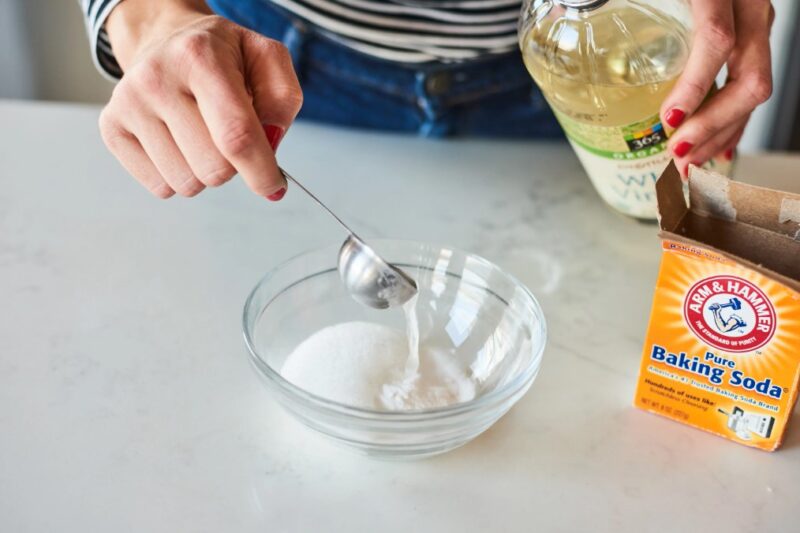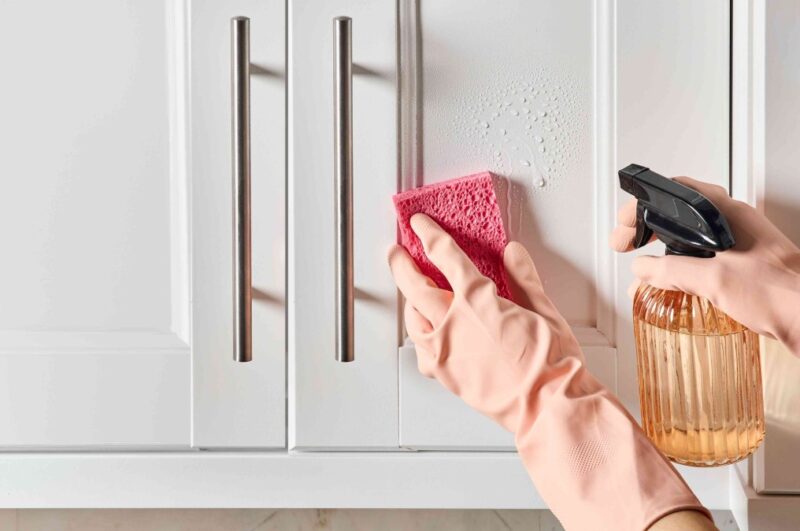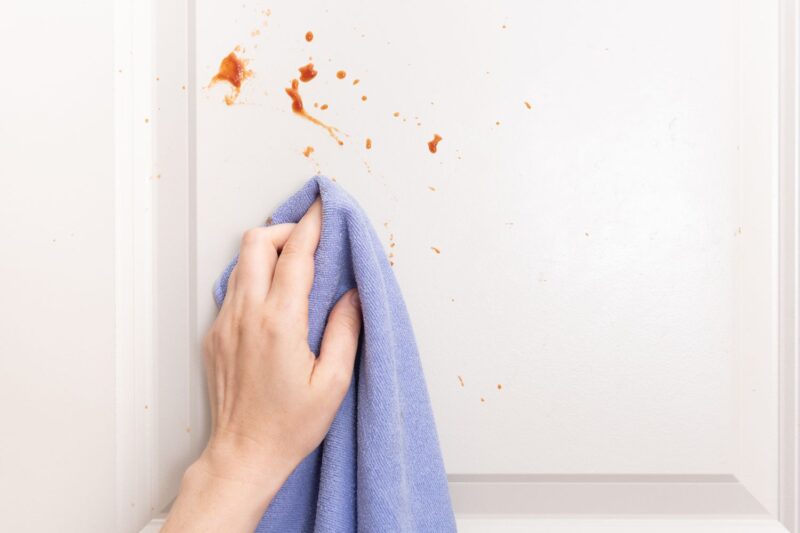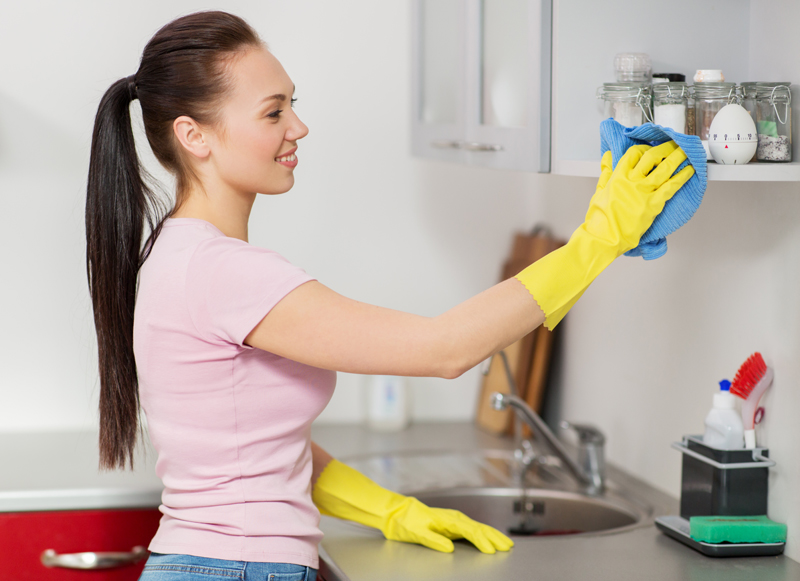Grease stains on kitchen cabinets are more than just an eyesore, they’re sticky, stubborn, and can gradually ruin the finish of wood, laminate, or painted surfaces. If you’ve tried everything from scrubbing with hot water to expensive cleaners and still can’t get rid of that filmy residue, don’t worry. You’re not alone, and more importantly, you’re not out of options.
In this guide, I’ll walk you through the fastest, most effective methods to remove grease from cabinets using simple, accessible items. No gimmicks, no fluff, just clear steps that work.
Why Grease Sticks to Cabinets in the First Place
Before we tackle removal, it helps to understand why grease sticks so stubbornly. Kitchen cabinets are constantly exposed to airborne oil particles, especially those near stoves. When combined with steam and airborne dust, those oils cling to the cabinet surfaces, forming a tacky layer that hardens over time.
Different materials absorb or resist grease differently. For example:
- Wood can soak in oil if unsealed or poorly finished.
- Painted cabinets may develop discoloration or peeling if scrubbed too hard.
- Laminate is easier to clean, but the grease can build up in the seams.
Grease becomes more than a visual issue, it attracts dirt, weakens finishes, and eventually causes permanent staining.
The Fastest DIY Method ─ Vinegar and Baking Soda Paste

Let’s cut to the chase. If you want a fast, effective fix using stuff you probably already have at home, this method is for you.
Here’s how to do it:
- Mix the paste ─ Combine 1 tablespoon of baking soda with 1 tablespoon of vinegar. The fizzing is normal; that’s your natural degreaser activating.
- Apply gently ─ Using a soft cloth or old toothbrush, apply the paste to the stained area.
- Let it sit ─ Wait 2-3 minutes. This gives the mixture time to break down the grease.
- Wipe away ─ Use a damp cloth to remove the paste and loosened grease.
- Dry ─ Pat dry with a clean towel.
This combo is non-toxic, safe for most surfaces, and shockingly powerful. I’ve used it on everything from cabinet doors to drawer handles and even under-the-range hoods.
Other Methods That Work Quickly
Depending on what you have on hand or how severe the stains are, you might want to try a different approach. Here are a few more fast, reliable options.
Best options for quick cleaning:
- Citrus-based degreasers ─ Products like Goo Gone or Krud Kutter are specifically designed to cut grease fast. They’re ideal for thick build-up or years-old grime.
- Dish soap and warm water ─ Mix a few drops of strong dish soap (like Dawn) with warm water. Let it soak on the grease for a minute or two, then scrub with a microfiber cloth.
- Magic erasers ─ These work wonders on laminate or semi-gloss painted surfaces. Just wet the sponge slightly and rub in small circles, gently.
- Commercial cabinet cleaners ─ If you’re dealing with expensive cabinetry, you might prefer products designed specifically for wood and finish preservation.
One Thing to Avoid When Cleaning Grease

It might be tempting to grab a metal scrubber or an abrasive sponge, but don’t. You could remove your grease problem and your cabinet finish in one go.
Also, avoid cleaners with ammonia or bleach on wood or painted surfaces. These can discolor finishes or create a sticky residue of their own.
If you’re unsure what’s in your cleaner or if your cabinets are particularly delicate, test a small area on the inside first.
Sometimes, homemade solutions won’t cut it, especially if the grease has been sitting for months or longer. In those cases, degreasers make sense.
One tip here, if you’re unsure whether a product contains artificial or AI-generated reviews, you can double-check the source using tools like ChatGPT Zero. That helps you filter out exaggerated product claims and stick with genuine, proven options.
Preventing Grease Build-up Going Forward
Once you’ve finally removed the grease, you’ll want to avoid doing this whole process again any time soon. A little prevention goes a long way in keeping cabinets clean.
Smart habits to adopt:
- Wipe down cabinets once a week with warm, soapy water, especially around the stove.
- Install a range hood filter or keep it well-maintained to trap airborne grease.
- Use splatter guards when frying or cooking with oil.
- Keep your hands clean when opening cabinets during cooking.
- Apply a protective polish or wax to wood cabinets every few months.
It doesn’t have to be complicated. Five minutes here and there will keep grime from ever taking hold again.
What to Do When Grease Just Won’t Come Off

Sometimes you’ll run into grease that’s practically fossilized. If even the best degreaser or DIY mix won’t remove it, it could mean one of two things:
- The grease has penetrated the finish or wood itself.
- The “grease” is actually a stain caused by prolonged exposure or damage.
In those cases, you might need to:
- Lightly sand and refinish the area (for wood).
- Repaint the cabinet panel (for painted cabinets).
- Replace a section of laminate if the surface is warped or bubbled.
These are last-resort options, but they can restore the look if you’ve exhausted all else.
Final Thoughts ─ Keep It Simple and Consistent
Cleaning grease off cabinets doesn’t need to be a major project. The key is using the right method for your cabinet material, working in small sections, and avoiding anything too harsh or abrasive. Once you find the method that works for your space, it becomes part of a simple routine.
And let’s face it, a clean, grease-free kitchen feels better to cook in.
Helpful recap:
- Use vinegar and baking soda for a fast, natural solution.
- Dish soap and citrus degreasers work great too.
- Avoid abrasive tools or harsh chemicals on wood/painted surfaces.
- Maintain weekly to prevent stubborn build-up.
It’s not about scrubbing harder, it’s about scrubbing smarter.

